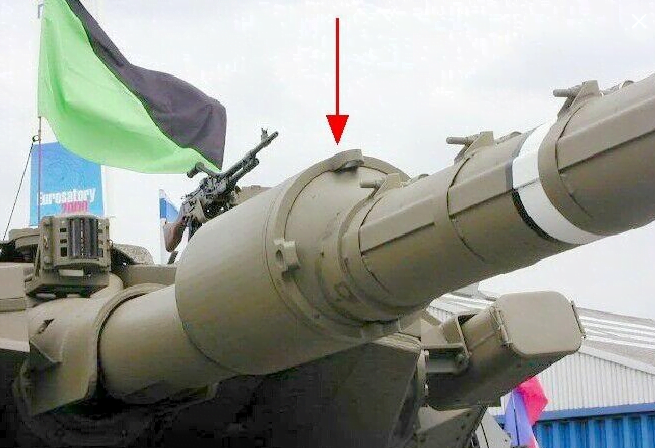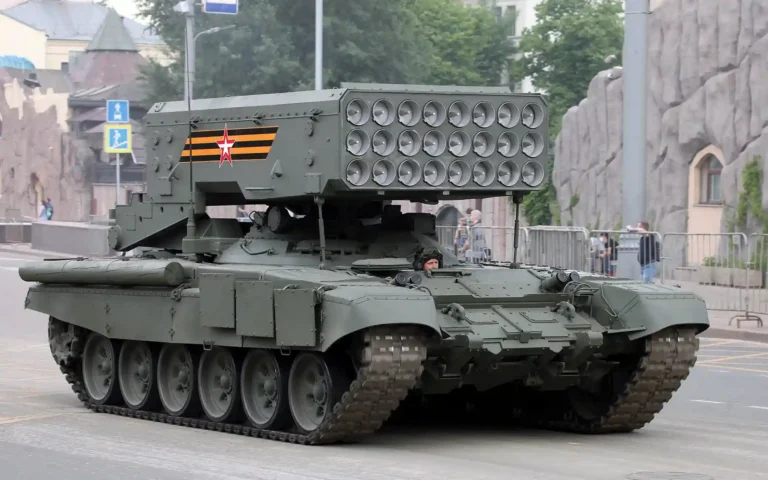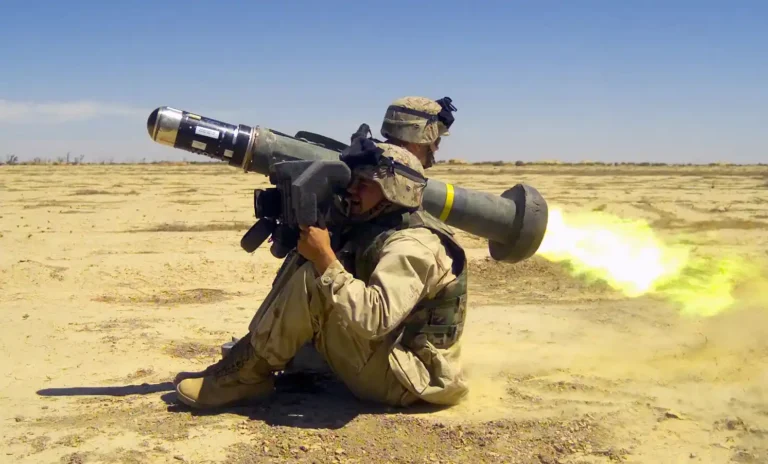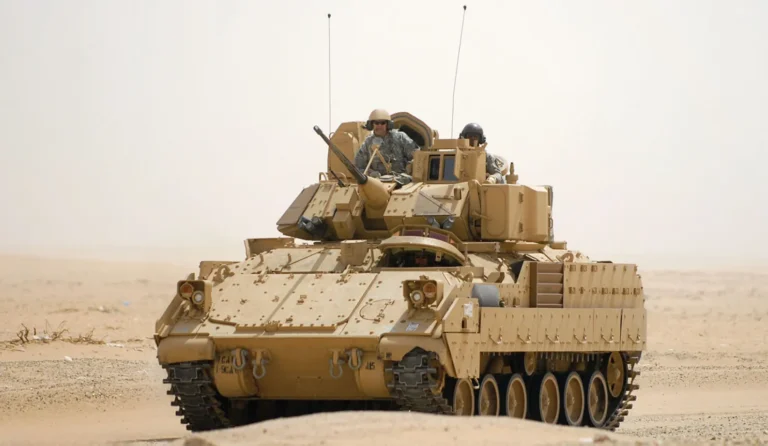Follow Us:
Share
Table of Contents:
Defense Feeds – Do you know what is a simple system that keeps the tank crews safe? One of the examples that can be identified is a bump in the barrel of the 120mm Abrams tank gun, that is called “bulges” or bore evacuators.
So, a big question that comes to mind is “what are those bulges on tank gun barrels? What are they for? and how do they work? Anyway, let’s unpack these questions in today’s.

Tanks are manufactured to carry offensive weaponry on a highly mobile platform while keeping the crews safe from the elements, the environment, and, most importantly, the rivals. A tank consists of several sophisticated systems and components to perform these tasks.
The functions of which are difficult to explain merely by looking at them. One of the most paramount features of a tank is a bore evacuator, also known as a fume extractor. It is a device found on the barrel of most modern tanks. It’s location on the barrel may vary but they all follow the same principles.
This device has a function to remove lingering gases and airborne residues from the barrel of an armoured fighting vehicle’s gun after firing, particularly in tanks and self-propelled guns.

It is generally known that the gases produced by large calibre guns might cause serious problems. The fumes are poisonous and can make crew members nauseous if inhaled in large amounts, while the heavy smoke can impair vision. Enough gas can hinder a human’s capacity to function effectively.
Furthermore, the gasses may contain still-explosive propellant particulates, causing in a ‘flareback,’ or the explosions of the gasses within the turret, potentially wounding or killing personnel inside.
So how does it work?
A bore evacuator is relatively a very simple design that doesn’t have any moving parts. It is a hollow chamber that is sealed to the barrel of the gun. A ring of holes is drilled into the chamber through the barrel.
When a round is fired, the combusted propellant generates tremendous pressure behind the shell, forcing it through the barrel. Once the rear of the shell passes the bore evacuator holes, this high-pressure gas rapidly flows into the chamber.
As the shell approaches the end of the barrel, the pressure in the barrel starts to decrease, until almost reaching atmospheric pressure when the shell leaves the gun.
However, as the bore evacuator chamber is still under high pressure, the gasses contained inside rush back into the barrel through the holes, pointed toward the muzzle, forcing the gasses to flow in that direction.
This rush of gas toward the barrel end pulls any lingering smoke out with it. It is important to know that this entire sequence occurs within a fraction of a second.
That’s all for today. If you like about this information don’t forget to like, comment and share! See you next time!
Share
Defense Feeds
Defense Feeds is publication focusing on informing, engaging, and empowering the world by providing accurate information from defense technology.
Powered by Defense Feeds © 2025 – All rights reserved.




